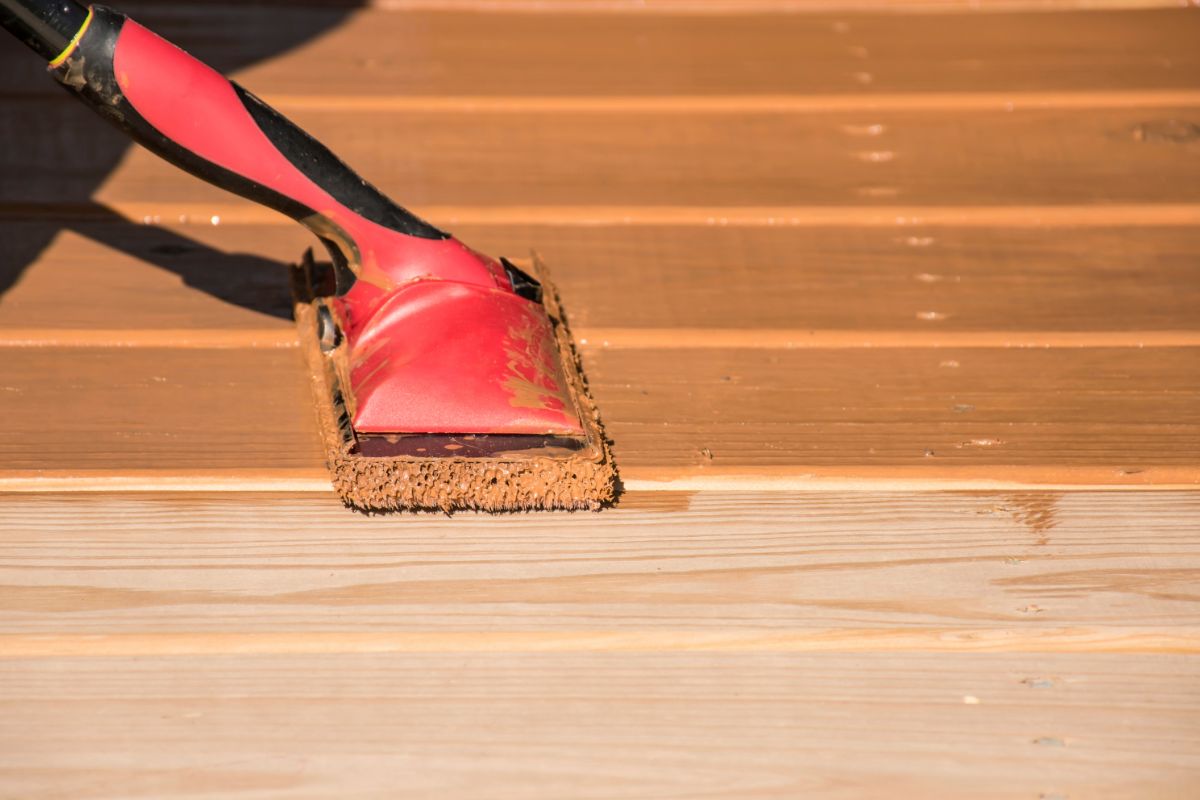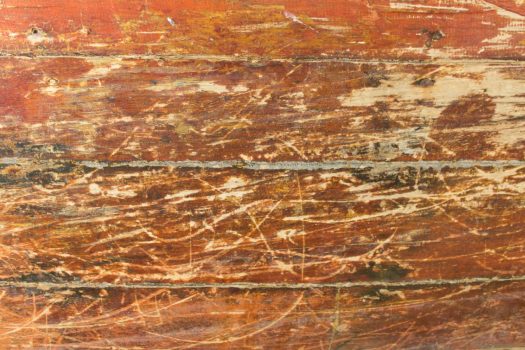Contents
Wooden floors are unique in the way they bring beauty and add value to a home, but they also need to be well maintained to hold this value.
Natural wooden floors are susceptible to surface wear, water marks, and more severe damage.
Preventing damage is essential, and using area rugs with soft protective pads to move furniture will help prevent damage. Make sure to remove shoes as much as possible and keep your pet’s nails trimmed short to prevent the floor from being scratched.
When you see widespread wear and tear on your wood floor, it may be necessary to have a total floor refurbishment.
This can be left to the professionals, but you can minimize or completely remove less severe marks and discoloration with the following tips.
Clean Hardwood Floors Gently
Some lackluster wood can magnify the appearance of scratches and more worn areas, not to mention dirt particles that can find their way into your hardwood floor and can lead to worse scratches.
Your first course of action should be to start some gentle cleaning.
You should avoid brooms or abrasive scrub pads and never soak the floor with water or liquid cleaner.
Instead, use a soft mop or vacuum to remove dust, hair, or surface debris.
To clean, you should add two to four drops of liquid soap to a mix of water, mix in a spray bottle and mist your floor.
Distribute the solution with a dry microfiber mop. Next, lightly spray the floor with fresh water and buff with a soft, dry cloth.
Sand Out The Scratches
Some elbow grease can bring back the life of any wooden floor. Fine-grained sandpaper is all that is required to remove any damage.
Sand the floor in the direction of the grain; you will need to reapply any stain that you may have buffed out in the process.
Once you find the right stain for your floor patch, test a urethane finish.
A water-based urethane will dry quickly with a shiny finish on new floors but may create too much contrast if floors have darkened with age.
Oil-based urethanes are strong smelling but will dry with a yellow tinge that darkens over time which may be better suited to the color of an older floor.
Make sure that your sanded area is smooth and thoroughly clean before you decide to stain and finish.
Color Scratches With A Wood Stain

You can minimize the appearance of deep scratches with a wood stain; this comes in oil-based, water-based, gel, or any other combination varieties.
Oil-based stains dry slowly and can be difficult to work with but will also provide the richest, longest-lasting color.
Water-based stains are more readily available and come in more shades making for easy application and clean-up.
Combination stains are designed for polyurethane finishes; while gels do not penetrate, they can be used on various materials, including wood that was previously painted.
Make sure you choose the right stain formula for your wood finish and fully fill the scratch with the liquid color.
Use a Q-tip to remove any excess stain to allow it to dry completely.
Stain markers and blending pencils can also be used, but you must find the correct color combination to match your floor.
Apply it to the scratch and follow the package directions, wiping away any excess and allowing it to dry thoroughly.
Strip Off The Finish
If your floor is in poor shape and is covered by layers of polyurethane, wax, or paint, then you can strip them to reveal the unfurnished looks it had when brand new.
To do this, choose a stripping agent, preferably a low fume agent.
Whichever product you decide on, follow its package instructions closely to apply, then use a fine grade steel wool and rub in the direction of the grain to remove any excess stripper.
If you only intend to strip only a small section of your flooring, then make sure that you have done a patch test to find the correct matching stain and polyurethane coating to apply after the stripping process is complete.
Patch And Mend Deeper Scratches
For deeper gouges in your wood, use a wood filler that can be sanded, stained, or painted.
You can also use a pre-colored latex wood filler. Fillers will come in a range of colors and will need to be blended to match your floor exactly.
This option is the best for small, deep holes that can then be filled, sanded, stained, and finished leaving your floor flawless.
How To Revive A Hardwood Floor?
Hardwood floor revivers can help restore the beauty and luster of your hardwood floors without the need for sanding or buffing.
First, clean the surface of any dust or debris, then apply a single coat with a clean paint pad and then let it dry.
Hardwood floor revivers are available in both high and low gloss. Choose the one that is right for you. You should also choose one formulated to last three to six months.
Effective Refreshers Found In Your Pantry
A combination of baking soda and olive oil can help to reduce and remove any scratches from wood.
Make sure to vacuum your floor thoroughly and then apply baking soda that has been moistened with several drops of olive oil to any marred areas.
You should then wait at least five minutes and then buff the mixture in gently with a soft sponge.
Clean the applied area thoroughly with a damp cloth and dry with a towel.
Final Thoughts
So there you have it. Hopefully, from reading this article, any worries over scratches on your beautiful floor can be put to rest.







